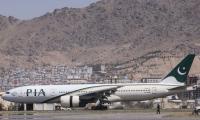ISLAMABAD: The economy will grow 4 percent in next fiscal year from a slow-down in 2019 on proposed policy measures to address structural imbalances, but inflation is likely to pick up further due to risks of high global commodities prices, a weaker rupee and a planned tax increase, budget documents showed on Tuesday.
Growth is estimated at 3.29 percent for the outgoing fiscal year. Annual plan for 2019/20 showed that the growth target of four percent is based on contributions from agriculture (3.5 percent), industry (2.3 percent) and services sectors (4.8 percent). The growth targets are subject to favourable weather conditions, management of current account deficit, consistent economic policies and aligned monetary and fiscal policies, according to the annual plan.
The government supports contractionary monetary policy to restore macroeconomic stability and manage aggregate demand. “The challenge would be to strike a balance between growth and stability in such a way that monetary policy tools might not suffocate economic growth while containing inflationary pressure,” the document said. Consumer price index (CPI) inflation was forecast at 8.5 percent for the next fiscal year because of rising commodity prices in international market and effect of exchange rate depreciation. Consumer price index inflation was recorded at 7.19 percent for the July-May period of 2018/19 fiscal year.
Consumer inflation is projected to enter into double digit in the next fiscal year if prices continue to surge. There are certain downside risks emanating from upward adjustment in utility prices, global oil price increase and domestic supply shocks.
The annual plan approved by the National Economic Council said the growth is expected to recover in 2019/20, while macroeconomic stabilisation is achieved through curtailing domestic demand.
Fiscal consolidation and regulatory measures are to ease the growing pressures on the external front. The contractionary monetary and fiscal measures have already decelerated economic growth since December 2017 and it will be the second fiscal year of stabilisation and adjustment. The year will also unfold the implementation of the International Monetary Fund’s program. Inflation is expected to remain on a higher trajectory, though the spikes would be contained through monetary contraction.
Agriculture sector is targeted to grow 3.5 percent on the basis of expected contributions from important crops (3.5 percent), other crops (3.1 percent), cotton ginned (2.5 percent), livestock (3.7 percent), fishery (4.0 percent) and forestry (2 percent). Better production of cotton crop is expected during 2019-20 given favourable weather conditions and improved input supply.
Industrial sector is expected to grow 2.3 percent during 2019/20 on the back of better energy supply, better investment climate and consistent policies. The mining and quarrying sector is projected to grow by 2 percent, manufacturing sector (2.6pc), large scale manufacturing (1.5 percent), construction and electricity generation and distribution and gas distribution (1.5 percent each).
The annual plan expected services sector to grow 4.8 percent in 2019/20, supported by growth of 3.8 percent in wholesale and retail trade, 3.5 percent in transport, storage and communication, 6.5 percent in finance and insurance, 4 percent in housing, 5.7 percent in general government services and 7.1 percent in other private services. The expected higher growth in commodity producing sectors would support the targeted growth in services sector.
Resurgence of global commodity prices in 2019/20 is a positive signal for exporters. “Concerted efforts are required to enhance quality of exportable items, diversify product range and look for new markets.” Trade deficit is projected to be 10 percent of GDP. With improved investment environment along with China-Pakistan Economic Corridor investments and better performance in industrial sector, exports are expected to gain momentum. Exports for 2019/20 are projected to grow 6.2 percent, while imports are projected to increase by 0.8 percent. Current account deficit is projected at 3 percent of GDP in the 2019/20 fiscal year, according to the annual plan.
The government kept the annual investment target at 15.8 percent of GDP to achieve sustained and inclusive growth. Fixed investment is expected to grow to 14.2 percent of GDP in 2019/20. National savings as percentage of GDP are targeted at 12.8 percent.
The annual plan envisaged containing fiscal deficit, additional resource mobilisation, controlling current spending and switching to targeted subsidies.







